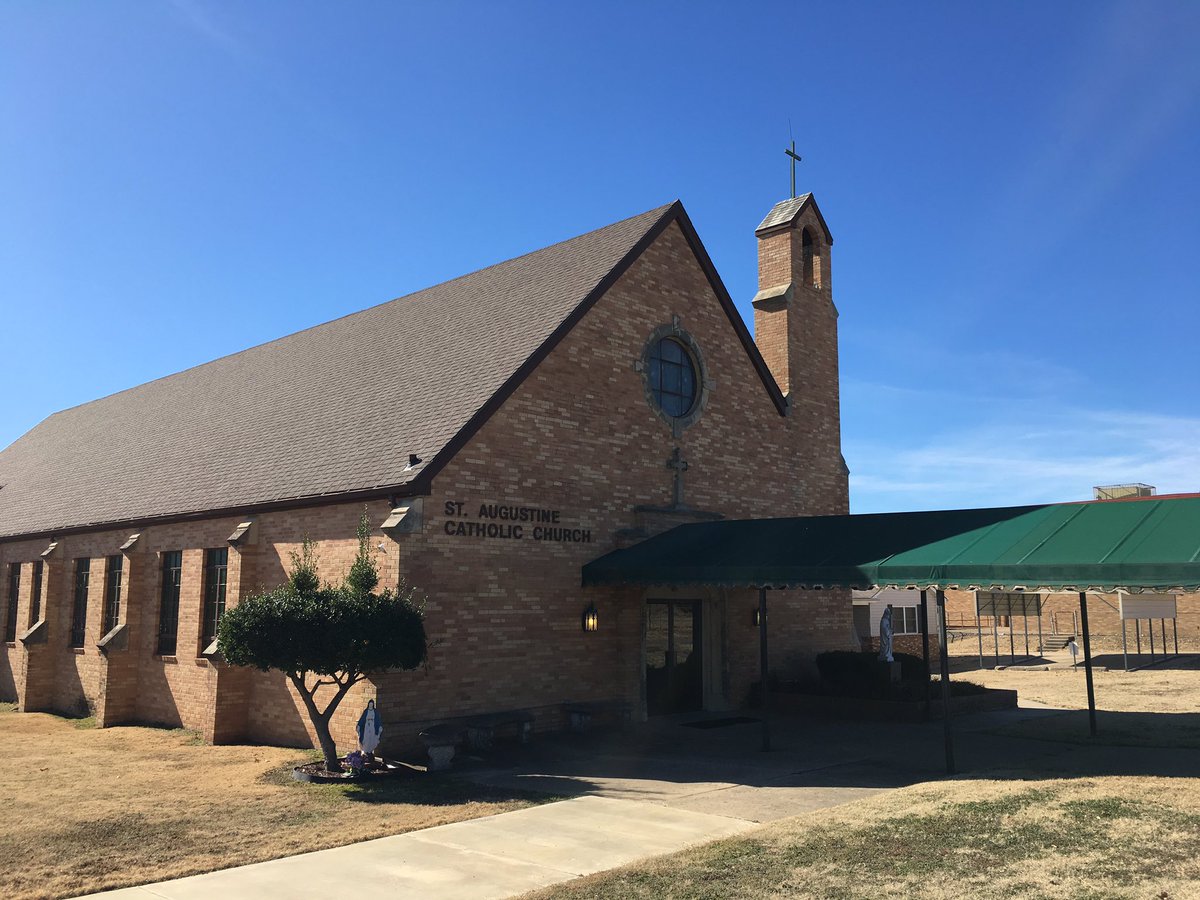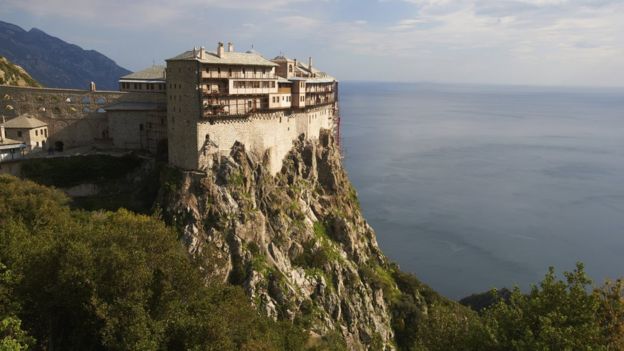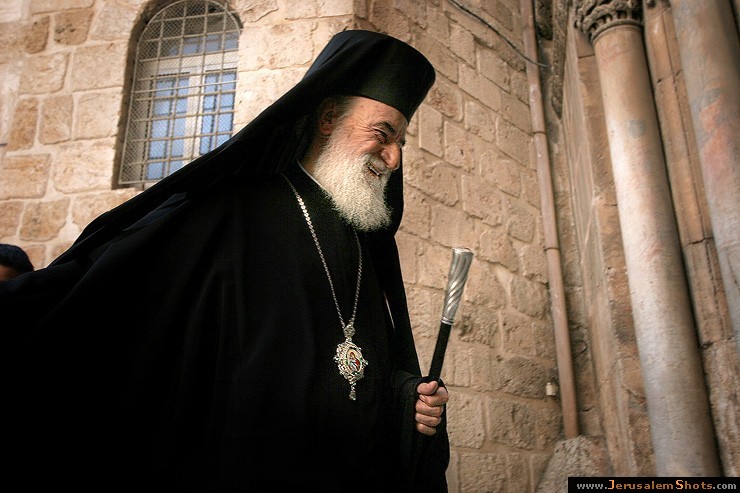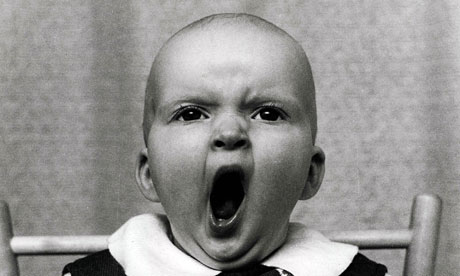A Resource to Share with Catholics Considering Orthodoxy.
I welcome Fall. It is my favorite season. As an outdoors-man, of course there’s the Fall colors, cool evenings that warrant the beloved campfire, and an excuse to switch from coffee to hot chocolate. Well who needs an excuse for hot chocolate? Especially if you spike it.
And there are the Fall events I love to attend. The Fair, Oktoberfest, Halloween hayrides, All Saints Day bonfires, and the Thanksgiving dinner.
But Fall would not be the same without a requisite stop at
Holy Trinity Greek Orthodox Church in Tulsa, Oklahoma in downtown T-town, for the annual Greek Festival. Its the first weekend in October. As in next weekend!
Interestingly, I believe at one time—being then less ecumenical—they called it the Greek Orthodox Festival, which I personally would actually prefer. Less P.C. I think. That is after all what they are celebrating. Yes, their Greek culture. I love their buttery, nutty baklava. But I also do appreciate their Orthodox Faith. Which is basically very close to the Catholic Faith btw, doctrinally speaking, more or less.
Side Note.
As a side note, it is a shame most Catholics haven’t an inkling of knowledge about the Eastern Church, or perhaps that it even exists. As for me myself, I wouldn’t have an inkling either had I not stumbled upon Eastern rites in Tulsa. I remember a trad friend from OKC once got his boxers in a bunch when I brought up going to the Byzantine Mass. He asked if it was valid or Catholic, and didn’t seem to accept my thorough explanation, as if in his mind, only the western, Latin Church has existed these past 2000 years.
Anyway, I like to drop in for an hour or two to listen to the Greek music--think the movie My Big Fat Greek Wedding--and take a tour of their church, usually led by one of the bearded, married Fathers, wearing his long, wide, black robe, and large chain and cross, across his chest.
Though I have yet to see one of their bad-ass, cool-looking bishops, with the super-manly beard and the tall, wide, black hat with a kind of black veil going down the shoulders. Which reminds me of the Latvian Orthodox priest in Seinfeld, who tried to instruct George. Remember that episode?
 So the tour group settles into the back pew listening to the priest’s talk. Those sentimentally gazing at all the Icons, I imagine to be Catholics from the diocese. The rest look perplexed, who I imagine to be Evangelicals. But I lean forward, mystified by the priest’s talk about Icons.
So the tour group settles into the back pew listening to the priest’s talk. Those sentimentally gazing at all the Icons, I imagine to be Catholics from the diocese. The rest look perplexed, who I imagine to be Evangelicals. But I lean forward, mystified by the priest’s talk about Icons. The Icon. A Metaphor of Eastern Christianity.
According to Orthodox--and Eastern Catholic, btw--Iconography, the Icon is not a mere, pretty symbolic reminder of someone in heaven. Something to sentimentally gaze at. The painted Image is also a “sacramental,” which itself mystically connects us with the person that it represents, by means of us venerating it. Especially kissing it. Yup, kissing it. Saliva and all. Men and women alike.
The symbol calls to mind indirectly the presence of the person in heaven, but get this, not my idea, the image also signifies directly the saint, being literally manifested in a mystical way through that very iconographic image. Yes, it blows my mind too, and it is hard to articulate being a modern Westerner, but the same basic theological principles of sacred images are also in the Latin Church. Its just that the theology of sacred images, especially controversial in the first millenium of Christianity, were more worked out in the East.
The holy Icon is the sacred work of a Church-commissioned artist, who first meditated on the holy person they are trying to manifest on canvass. They are instructed to first meditate on the life of the Saint, or Our Lord.
On the Scriptures, Patristic writings, and theological treatises of Iconography, and the canon laws on sacred images, before meticulously and spiritually transmitting in two-dimensional form the sacred image. The end game is to represent as accurately as possible, historically and theologically, the religious reality of that person, for veneration and imitation.
Eastern Orthodoxy is Alluring.
Eastern Orthodoxy is alluring, especially for certain disenfranchised Catholics who attend the Latin Mass. There does seem to be a trend of certain trads going Orthodox. This article is partly written for them.
I know of one family that were very committed traditional Catholics, of the SSPX-persuasion, who suddenly left their chapel and joined a kind of traditionalist, “Old Calendar” version of a Russian Orthodox Chapel, that just happened to be a few miles from their neighborhood. Maybe this article might reach them.
 In fact, what they joined was a schism, on top of a schism, on top of more schism. Eastern Orthodoxy has always been divided not as much by liturgical rites and episcopal jurisdictions, as by national-politico-cultural lines and petty disputes about things like liturgical calendars. And when I say “divided” I mean certain “schisms” between Orthodox Churches. Ask an Orthodox, and I think they will say that yes that’s how it’s been since they broke with Rome around 1000 A.D.
In fact, what they joined was a schism, on top of a schism, on top of more schism. Eastern Orthodoxy has always been divided not as much by liturgical rites and episcopal jurisdictions, as by national-politico-cultural lines and petty disputes about things like liturgical calendars. And when I say “divided” I mean certain “schisms” between Orthodox Churches. Ask an Orthodox, and I think they will say that yes that’s how it’s been since they broke with Rome around 1000 A.D. This family joined the “true” Orthodox Church because it used the old calendar and did not participate in ecumenism. To them, almost all the mainstream Orthodox Churches are not true Churches. Kind of a sedevacantist version of an Orthodox chapel.
They were considered in schism from the mainstream Russian Orthodox Church, which itself is the subject of separation from a # of other Orthodox Churches. This family is also in schism from the mother of all Orthodox Churches, headed by the Patriarch of Constantinople in Turkey, who is considered the “first among equals” of all Orthodox bishops. It seems to have replaced for the Orthodox the Apostolic tradition of the Church of Rome having pride of place. It is an odd paradox. And not according to the teaching of the Early Church Fathers.
Another short anecdote. Recently a well respected young man converted to traditional Catholicism, but very quickly and suddenly vanished, re-converting to Eastern Orthodoxy, which I hear left people scratching their heads why. Hey guy, if you’re reading, this post is written for you too!
 Is the Byzantine Chapel still in the Basement at St. Augustine's in north Tulsa?
Is the Byzantine Chapel still in the Basement at St. Augustine's in north Tulsa? I also remember attending the Byzantine Mass in Tulsa, and suddenly one Sunday there were no acolytes to serve the Divine Liturgy. These two brothers, who were discerning a religious vocation, objected to Latinizations that had still remained despite post-conciliar liturgical reform to the Liturgy of St. John Chrysostum. That is basically the Mass (Divine Liturgy) handed down from the Apostles, in Greece, to the Eastern Catholic Church, which is also almost identically used by the Eastern Orthodox. The brothers joined the Greek Orthodox Church in downtown Tulsa, and I don’t think it was for the baklava. Though cute Greek girls wearing skirts may have drawn them in, I wonder.
I wonder if they wound up novice monks at Mt. Athos in Greece, the spiritual, monastic Mecca for the Eastern Orthodox. It is the Fontgombault of the Eastern Church. It almost seems like a particular phenomenon for tradition-minded Catholic men to join the Orthodox with visions of becoming a Mt. Athos monk. I suspect most end up getting married. After all, there is only so much space in that venerated monastery on the rocky hill overlooking the sea.

And this phenomenon has been talked about over and over in the online traditional Catholic forums the last 17 years that I’ve read them. Threads about this aren’t as frequent as they are about the new Mass or Pope Francis. Tbh, those threads make me yawn.
But they pop up every couple months or so. Often it is a young Catholic man flirting with Orthodoxy, challenging the supposedly spiritually dry Latin Rite Catholics in the forum on points of doctrine that were already settled by the Early Church Fathers themselves. Hello.
A short perusal of the classic 3 volume set The Early Church Fathers, along the lines of convert Cardinal Newman’s own inquiry about the Papacy, will verify that the original Sacred Tradition of the Church always recognized the Bishop of Rome as having “Pride of Place,” but also Universal Jurisdiction over all bishops. Yup. Universal. Jurisdiction. Those historical facts are as plain as a round Earth, or gravity causing falling objects.
The Context.
I find that any religious conversion has a context, and from what I gather that context is the declining state of the Roman Catholic Church, in particular its practical loss of ecclesial Tradition as a three-dimensional, organic dimension of church life.
The Catholic-converting-to-Orthodoxy is disillusioned and confused, as is everyone else. They yearn for the sacred, the mystical, the timeless. They want a theology, spirituality, and liturgy that transcends ideology. Something that goes above and beyond the more human, naturalistic, and rationalistic mindset that has sometimes taken over parts of the Latin Church. They rightfully are turned off by the dry, Thomistic “manuals,” the short-sighted focus on St. Thomas himself in contrast to his Wisdom, all Scholastic and Patristic writers, and the very quick, drone-like way the traditional Roman rite could sometimes be celebrated in the past. And sometimes still today, to be honest.
The Catholic-converting-to-Orthodoxy is fatigued by church politics, and polemical writings. The Pontifical Magisterium is not what the first thing they tend to think of when they think of the Faith; rather, the Gospel of Jesus Christ pops up on their screen. It is a false dichotomy, but I can understand it. Considering the state of the Latin Church, I sympathize with them.
The Alluuure.
While turning away from a perceived Western rationalism, they turn toward the Allure of the East. Part of that allure is obvious to the Latin Mass Catholic. The Eastern Liturgy is out of this world beautiful, enchanting, and spiritually penetrating. It is stable, without liturgical dancers, incense bowls, or clown Masses. It is basically how St. Paul worshiped with the first Christians in the first churches in Antioch, Greece. They used sacred images, what would become the Eastern chant--which sounds quite haunting, in a good way--and tons of candles.
Listen to some Eastern Christian chant HERE.
It was/is a sacred festival of the senses, culminating in receiving the Eucharist under the appearance of leavened bread, placed on a little spoon, which is dipped into the Precious Blood, and consumed by the worthy believer. I can tell you from my Byzantine rite experience, Holy Communion in that manner is most edifying.
Btw, let’s call Msgr. Brankin and bring it back to Tulsa already! If it was once at the FSSP-shared parish church before, how about support it being offered on occasion at least at Most Precious Blood? I would so be there. Fr. Sherman, the former celebrant of this rite, can only do so much, considering he has now passed on to the hereafter. RIP, Fr. Gary!
“Wisdom be attentive!”
- a common prayer in the Divine Liturgy.
- a common prayer in the Divine Liturgy.
The Danger.
But I think part of the allure of the Christian East, is a hypnotic gravitation to the East itself. To the Oriental, Mystical, and Esoteric, if not also Gnostic. It reminds me of secular Americans turning to the East, that is towards Eastern, Asian religion. And lets face it, if your soul is churning over and over in search of the transcendental, Buddhism, while horribly pagan, is also very mystical, humanly speaking.
John Senior meditated on this drift to the East in his must-read-for-all-trads-who-dare-call-themselves-trads, The Death of Christian Culture (its a must read folks). Modern, western man has fallen into a perpetual state of “Ennui,” or deep, lifeless boredom over existence itself. The Catholic-converting-to-Orthodoxy is probably wrestling with this same sort of Ennui. They want to come alive spiritually. And sometimes they may not find that at some Latin Mass chapels where the main Mass is a Low Mass, or spiritual piety might gravitate to a 1950’s-ism form of externalistic piety. These Catholics on the verge of schism from the Apostolic See, are violently reacting to modernity everywhere they experience it. And I don’t blame them for that internal reaction.
But flip the coin over, and truth be told, the simplistic ideology ingrained into the catechumen to Orthodoxy is this:
1. It is said, the Church of Rome is bad, bad, and bad. And bad. It is a dry well of heresies and worldliness. And this was centuries before Vatican II.
2. It is said, the True spirituality is in the East. Just Eastern liturgy and spirituality, and monks and families. Roman liturgy? The spirituality of St. Theresa of Avila or St. Ignatius of Loyola? Wha? A variety of religious orders with varying degrees of contemplative vs. active emphasis, to meet the varying needs of the Church? Too complex. Keep it simple silly. The Desert Fathers didn’t form Societies of Apostolic Life, man. They just retreated and prayed the psalms, as every good Christian should do. Well, you get the picture.
3. So repudiate the Holy Father, confess your heresy, embrace only the first 7 Ecumenical Councils (forget about the other 14), and shazam, you’re Orthodox.
Yet the divide is a little deeper than that. Yes, there is the bad, false, and ugly in the West; but there is also the good, true, and beautiful. Likewise, yes there is the good, true, and beautiful in the East; but there is also the bad, false and ugly too. That needs to be admitted and looked at.
Heresies.
Where do I begin? If there are sins against the divine Church within the Church itself, as in heresy, then of course there is going to be heresy in the Eastern Church. But what remedied the problem and cut off the dead vines from the tree? When Eastern Christians were/are united to the Church of Rome, the answer to that question is divinely simple and divinely inspired.
The answer is the Christ-instituted Pope. The central authority. The Father who properly orders the Household, while the Mother and children submit and obey. It is a principle of nature and human nature, as the Greek philosophers taught, that for a household to survive and be properly ordered and united, it requires a Final authority to make certain decisions that only one person can make, not two or three or the many. But for certain critical, life-preserving executive decisions which require some kind of formal, God-instituted, central authority, the buck must stop with one man.
For the Church instituted by Christ, that man is the Pope, the Holy Father, the Bishop of Rome, the Patriarch of the West, the Servant of the Servants of God. He is is the Vicar of Christ whose final word solves very tough doctrinal and disciplinary questions and restores unity. And thank God He gave our Church this source of authority and unity.
But there is no such thing that truly corresponds to what we call Pope, in the Eastern Orthodox Church. There is a Coptic Patriarch who uses the word in his title, but the meaning is very general in the sense of “Father.” “Pope” comes from “Papa” meaning “Father.” He is the Father of Egyptian Orthodox Christians.
But consider this, in the Eastern Orthodox Church, as it is called, there are many unsolved doctrinal conflicts that for 1000 years remaine unsolved and divisive. Artificial birth control--something intrinsically contrary to the natural law design of the procreative act--is allowed in certain circumstances. Well, its not like their parish priest is asking how often parishioners use condoms. Wide use of birth control is tacitly permitted. If you thought Pope Francis was contradictory about the Church’s teachings for the “Communion-for-the-Divorced-and-Remarried-without-Annulment-living-in Adultery” category, look at the Orthodox Church.
Remember, Our Lord ended Old Testament divorce and forbade it. His teaching clearly means “til-death-do-us-part.” About every Orthodox bishop will admit that in theory. But in pastoral practice nearly every Orthodox bishop publicly allows in their parishes a man to divorce his wife and remarry another woman in a state of adultery, and still receive Holy Communion in good standing with the community. Divorce-and-remarriages are in fact allowed. They are allowed up to 3 “marriages.” The 2nd or 3rd aren’t considered sacramental, but they are publicly blessed by the Orthodox Church.
Btw, this is probably what is in store in the future for us Catholics, after the next couple Synods or so.
But what any good Pentecostal will tell you--which trads often are compared to--marriage is for life. A man leaves his wife for another woman, that is what the bible calls adultery. And by allowing this 3 times, and to still receive the Holy Mysteries, objectively that is officially permitting and condoning adultery and Eucharistic sacrilege. Kyrie eleison (use of Greek intended).
Even if I were to be allured by Orthodoxy, those glaring contradictions would stop me in my tracks.
And while Eastern spirituality to a certain depth is refreshingly spiritual, it is because of the nature of autonomous, conflicting, Orthodox Churches, and that whole, fractionated, 1000 year old, ecclesial paradigm (before 1000 A.D. East and West were united under the Apostolic See), that the most bizarre and strangest notions of piety and spiritual practice reveal themselves.
Without one central authority representing Christ on Earth, nutty, pharisaical religious practices, that all religious and non-religuous people dislike, will grow and spread through the mainstream. Just as pietism or quietism or charismaticism represent the nuttiness of Protestantism, so the world of Orthodoxy also has its special monk gurus, hidden secret theology books that the elect are privileged to discover, and extreme forms of asceticism that St. Anthony of the Desert would have thought were whacked out.
This is not my opinion by the way. It is a historical, religious reality in Orthodoxy that any recognized theologian or academic of religion will describe.
Solutions?
I am already being long-winded, so I’ll just enumerate a few ideas.
1. Promote Eastern Catholicism. The Byzantine Liturgy under Rome. Compared to the Latin church, the Eastern Catholic side of the Catholic Church is pretty darn traditional, even with their somewhat watered down, conciliar liturgical reforms, and ethnic enclaves.
2. Reform the Latin Church. Bring back Tradition so religious, believing Catholics will have something to sink their teeth into, and a reason not to leave. Especially the traditional Roman rite. And no matter how millenial or trans-human people today may have become, the primordial need in human nature for the sacred and mystical will kick in. Many young people will fall in love with the traditional Mass. They already are.
3. Use “true ecumenism” to reunite the Orthodox to Rome. Now is the hour. This is the 100th Anniversay of Our Lady at Fatima’s Apparitions, where she wanted a conversion specifically of Russia. It was no coincidence that Russia was and is the largest contingent of Eastern Orthodox. I heard that the famous Fr. Gruner (RIP) Fatima Center is heading to Moscow!!! They want to bring the message of Fatima to the doorsteps of the Kremlin (or whatever the former Soviet Union calls it now).



